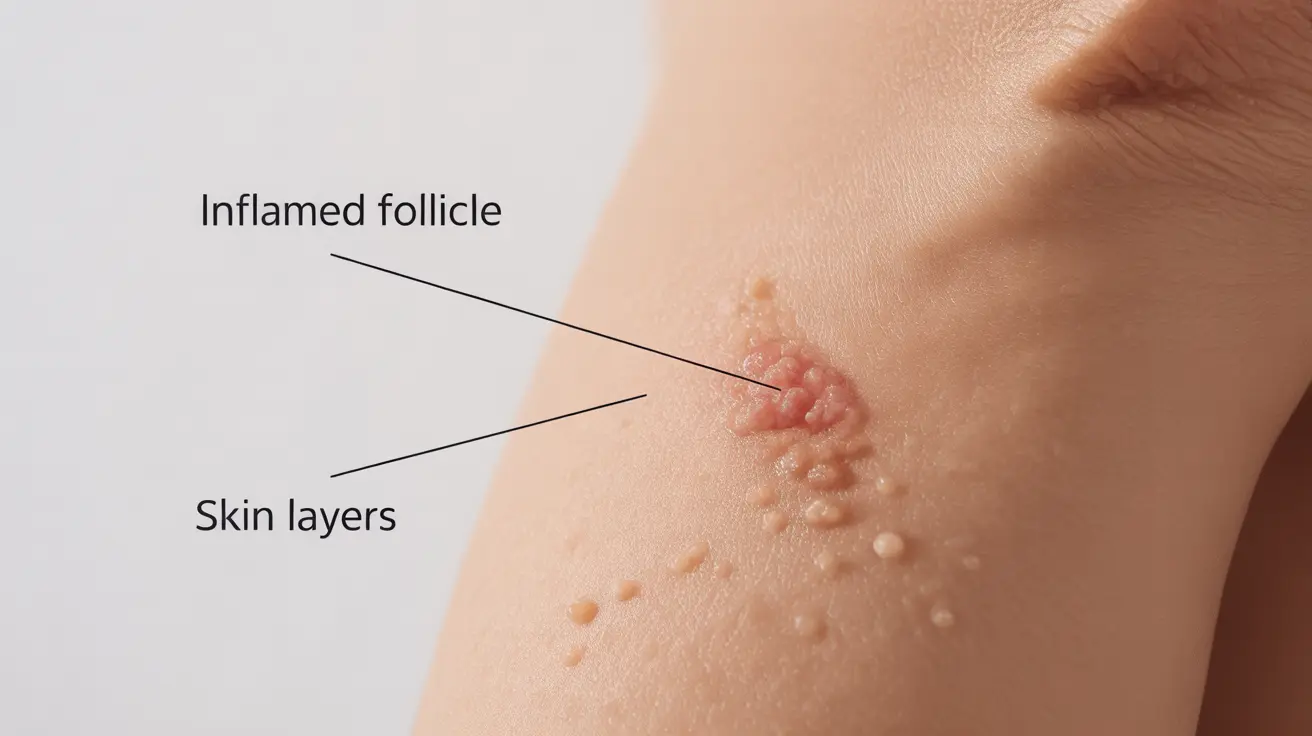Experiencing bumps after waxing is a common concern that can affect anyone who chooses this popular hair removal method. While these bumps are usually temporary and harmless, they can be bothersome and sometimes lead to more serious complications if not properly managed. Understanding why they occur and how to treat them effectively is crucial for maintaining healthy skin after waxing.
In this comprehensive guide, we'll explore the causes of post-waxing bumps, effective treatment options, prevention strategies, and when to seek medical attention. Whether you're new to waxing or a regular, this information will help you maintain smoother, healthier skin after your waxing sessions.
Understanding Post-Waxing Bumps
Post-waxing bumps, also known as folliculitis or waxing irritation, typically occur when hair follicles become inflamed or irritated during the hair removal process. These bumps can appear as small, red, sometimes painful spots that may be filled with clear fluid or white pus. They commonly develop within the first 24-48 hours after waxing and can affect any area where hair has been removed.
Common Causes of Waxing Bumps
Several factors can contribute to the development of post-waxing bumps:
- Inflammation from hair follicle trauma
- Bacteria entering newly opened pores
- Incorrect waxing technique
- Sensitive skin reactions
- Improper pre- and post-waxing care
- Trapped or ingrown hairs
Immediate Treatment Solutions
When bumps appear after waxing, there are several effective ways to soothe the skin and promote healing:
Cool Compress Application
Apply a clean, cool compress to the affected area for 10-15 minutes to reduce inflammation and soothe irritation. This can be repeated several times throughout the day as needed.
Gentle Cleansing
Keep the waxed area clean using mild, fragrance-free cleansers. Avoid harsh soaps or exfoliants that could further irritate the skin.
Topical Solutions
Consider using:
- Aloe vera gel for its cooling and anti-inflammatory properties
- Tea tree oil (diluted) for its antibacterial effects
- Over-the-counter hydrocortisone cream for inflammation
- Witch hazel as a natural astringent
Prevention Strategies
Taking proper precautions before and after waxing can significantly reduce the likelihood of developing bumps:
Pre-Waxing Care
- Ensure hair is the appropriate length (about 1/4 inch)
- Gently exfoliate 24-48 hours before waxing
- Keep skin clean and free of oils or lotions
- Choose a reputable salon or use proper technique for home waxing
Post-Waxing Care
- Wear loose-fitting clothes to prevent friction
- Avoid hot showers or baths for 24 hours
- Stay out of direct sunlight or tanning beds
- Don't exercise immediately after waxing
- Avoid touching the waxed area with unwashed hands
When to Seek Medical Attention
While most post-waxing bumps resolve on their own, certain symptoms warrant professional medical attention:
- Severe pain or swelling
- Spreading redness or warmth
- Fever or chills
- Pus-filled blisters that worsen
- Symptoms that persist beyond a week
Frequently Asked Questions
Why do I get red bumps after waxing and how long do they usually last?
Red bumps after waxing occur due to inflammation of the hair follicles and typically last 2-3 days. They're a normal reaction to the trauma of hair being pulled from the root, and usually resolve on their own with proper care.
What are the best ways to treat bumps and irritation after waxing at home?
The most effective home treatments include applying cool compresses, using aloe vera gel, keeping the area clean, and applying over-the-counter hydrocortisone cream. Wearing loose clothing and avoiding heat and friction also helps speed healing.
How can I prevent bumps, ingrown hairs, and folliculitis after waxing?
Prevent post-waxing complications by exfoliating gently before waxing, ensuring proper waxing technique, maintaining good hygiene, and following appropriate aftercare procedures like avoiding tight clothing and hot showers immediately after waxing.
When should I see a doctor for bumps or skin problems after waxing?
Consult a healthcare provider if you experience severe pain, spreading redness, fever, infection signs, or if bumps persist longer than a week. These symptoms could indicate a more serious condition requiring medical treatment.
What's the difference between normal irritation and a more serious infection after waxing?
Normal irritation typically includes mild redness, small bumps, and minor discomfort that improves within a few days. Signs of infection include increased pain, warmth, spreading redness, pus, fever, or symptoms that worsen over time rather than improve.




